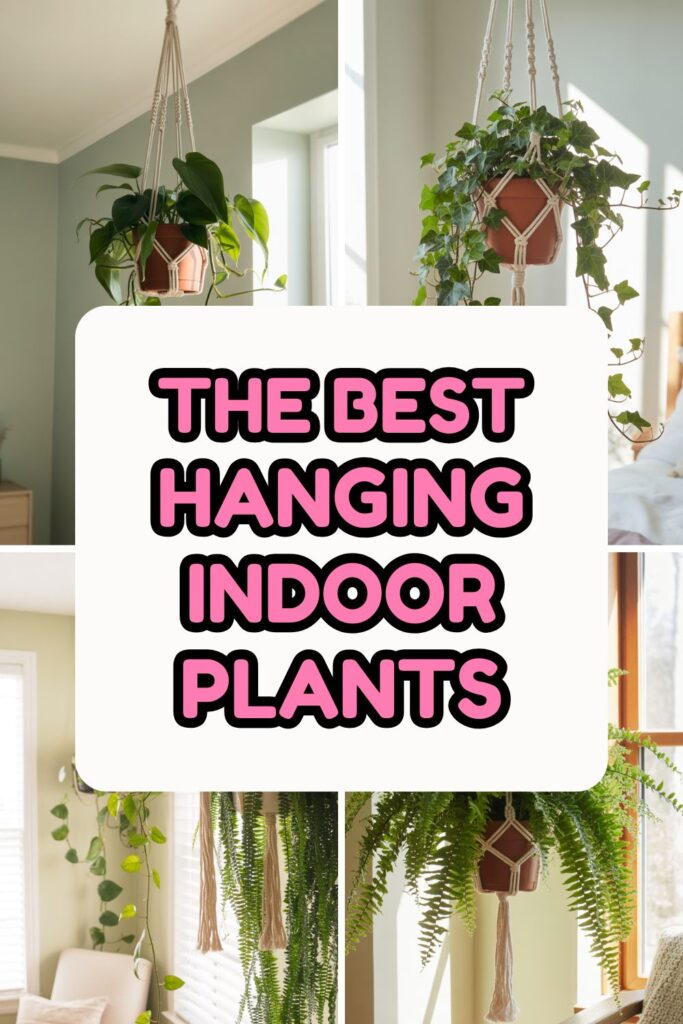Hanging Plants: The Easiest Way to Add Life (and Height) to Your Space
Affiliate links may be used in this post and if so I will receive a commission at no extra cost to you. I’m also part of the Amazon Affiliate (Associate) program where I earn a commission from sales made through my affiliate links. Find my full disclosure policy by clicking here.
Last Updated on May 21, 2025 by Nell Marie
If you’re looking for a simple, eye-catching way to bring greenery into your home, hanging plants are where it’s at. They’re perfect for small spaces, they add instant charm, and let’s be honest—they just look cool. Whether you’re trying to cozy up a corner, fill an awkward blank wall, or just want a little more nature in your life, hanging plants can do all that and more.
Save this article on Pinterest
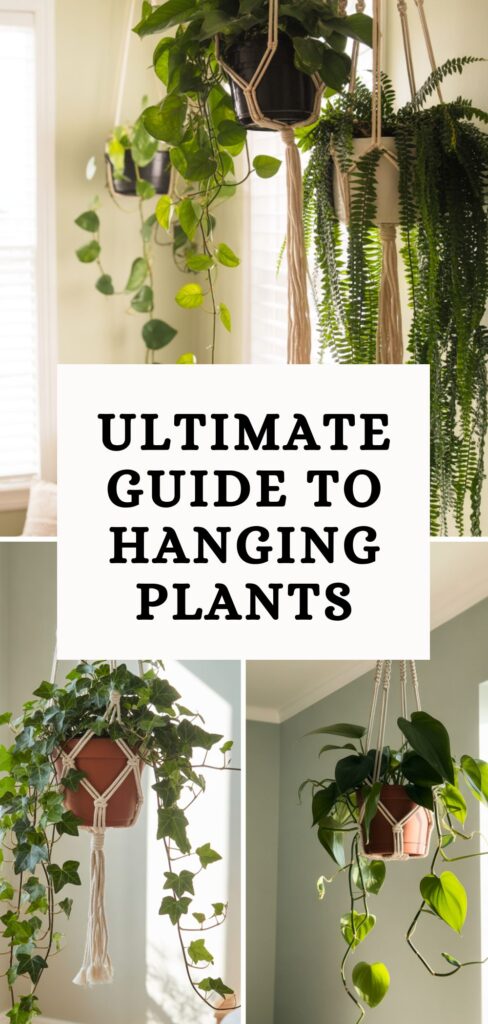
The best part? You don’t need a jungle or a green thumb to make it happen. A few smart choices and a little care go a long way.
Why Hanging Plants Are So Great
There’s a lot to love about hanging plants. First, they save space—super handy if you don’t have a lot of flat surfaces or floor room. Second, they bring some vertical interest to a room, which instantly makes your space feel more styled and layered.
And third? They just have a vibe. There’s something about trailing vines spilling out of a cute basket or leafy plants hanging near a window that makes everything feel a little more alive and inviting.
Plus, they’re great for:
- Softening hard lines or empty corners
- Creating a cozier, more natural feel
- Elevating your plant game—literally
Best Hanging Plants to Start With
Not every plant is cut out for the hanging life, but there are some that thrive in a basket or pot swinging from the ceiling or shelf.
Here are a few low-maintenance, beginner-friendly picks:
🌿 Pothos
Pothos are basically indestructible. They grow fast, love to trail, and don’t mind a little neglect. Great for lower light spots too. You can stick one in a corner with just a bit of filtered light, and it’ll still keep chugging along. Their vines grow long and lush, making them perfect for draping from shelves or hanging baskets.
And, they come in a variety of beautiful colors—like golden, marble, or neon—so you can easily match them to your room’s vibe. They’re also easy to propagate, which means you can snip a vine, stick it in water, and soon have a whole new plant to keep or gift.
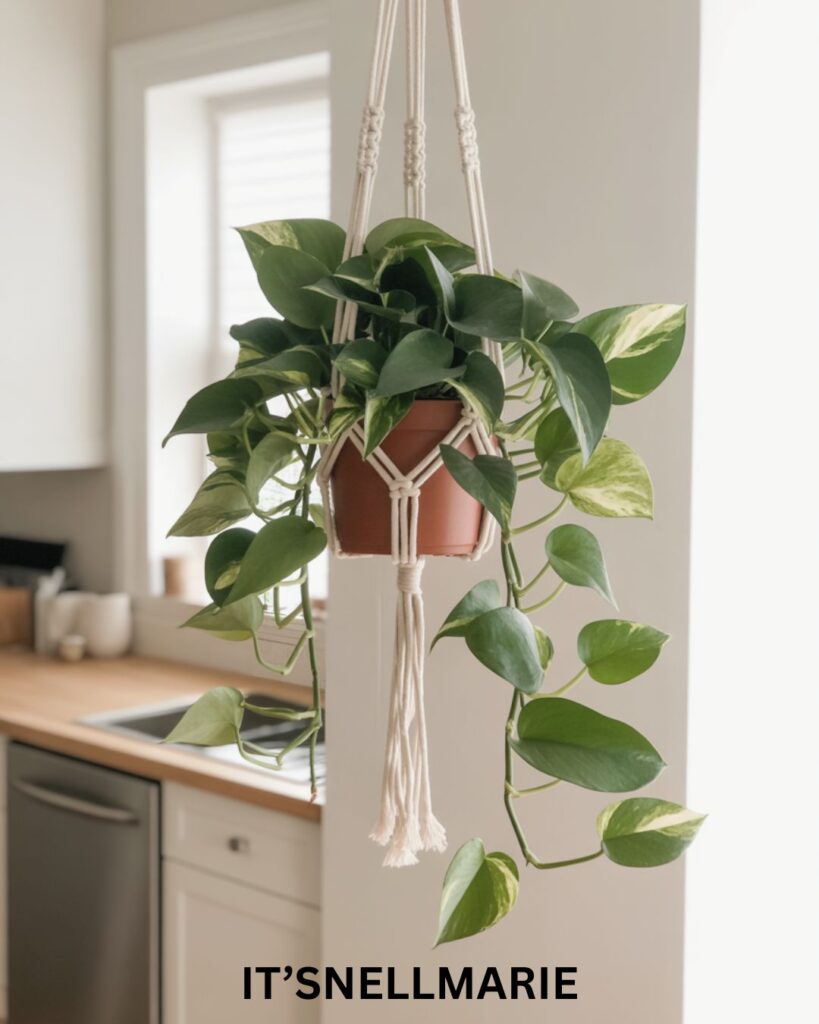
🌿 Spider Plant
These guys are classic. They grow fast and send out baby “pups” that dangle down like little plant ornaments. It’s super satisfying to watch those little offshoots develop, and you can easily snip and replant them to grow even more.
Spider plants are also known for being tough and adaptable, making them perfect for beginners or anyone who forgets to water now and then.
They do well in bright, indirect light but can handle lower light too, and they bounce back quickly if they get a little dry. Plus, their striped leaves add a nice pop of visual interest to any room.
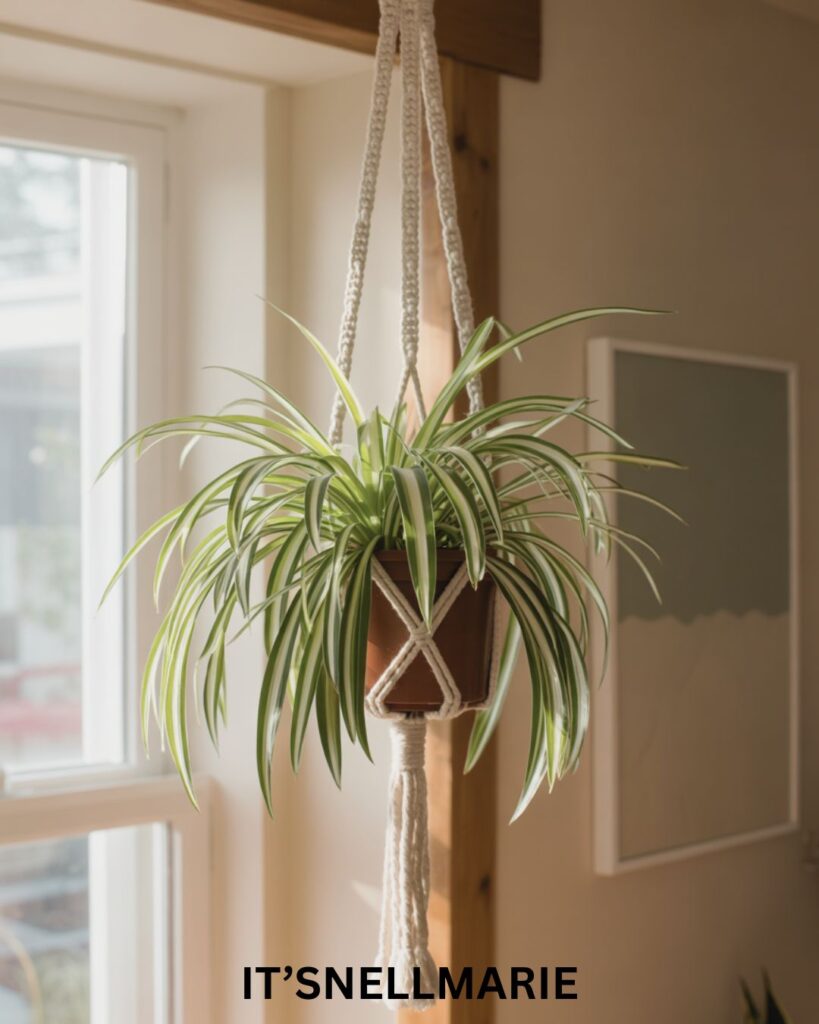
🌿 String of Pearls
Delicate and unique, this succulent has round bead-like leaves that look stunning spilling over the edge of a pot. String of Pearls adds a whimsical, almost fairy-tale vibe to any space with its trailing strands that can grow impressively long over time.
It thrives in bright, indirect light and only needs occasional watering, making it a great pick for sunny windows. Just be careful not to overwater—its plump little pearls store moisture, so less is more. With the right care, it grows steadily and can become a real statement piece in your hanging plant collection.
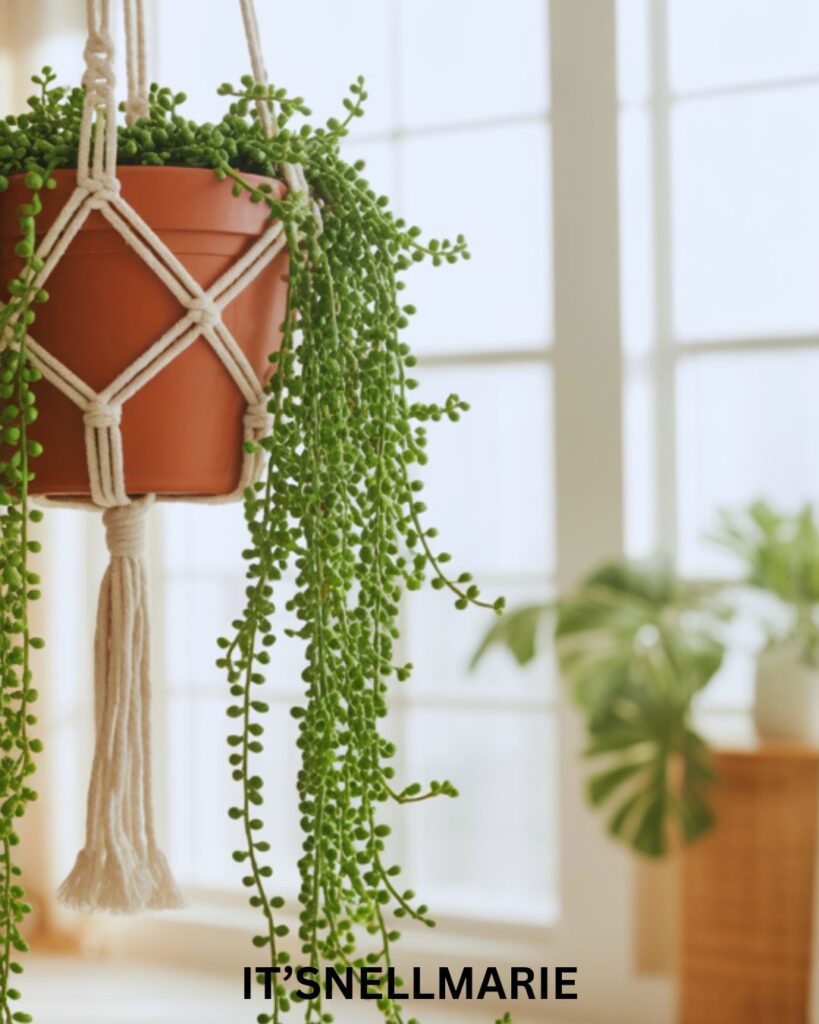
🌿 Boston Fern
Lush and full, these ferns look amazing in a hanging basket—just make sure they get humidity and consistent moisture. Boston ferns thrive in bathrooms or kitchens where the air tends to be more humid, but you can also mist them regularly or use a humidifier to keep them happy.
Their long, feathery fronds create a soft, elegant look that instantly makes a space feel more alive. They prefer bright, indirect light and don’t like to dry out completely, so keep an eye on the soil. With the right environment, they’ll stay vibrant and bushy all year round.
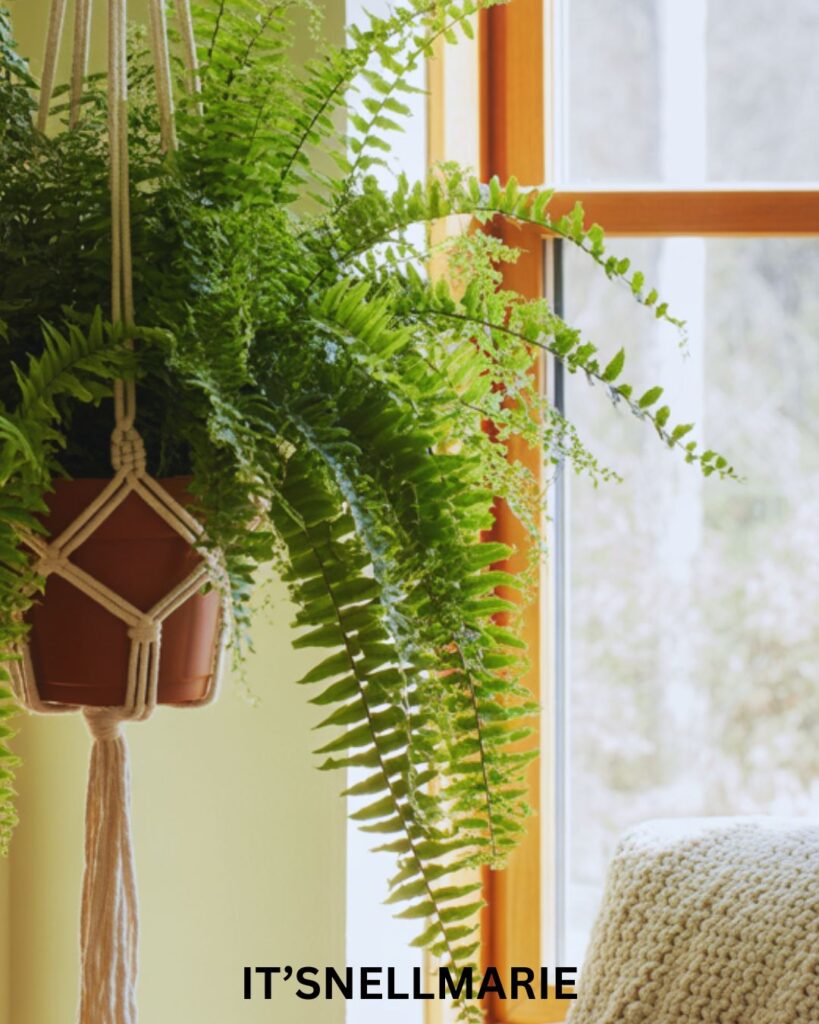
🌿 Philodendron (Heartleaf)
Similar to pothos, heartleaf philodendrons are easygoing and grow long, trailing vines. Perfect for beginners. Their deep green, heart-shaped leaves add a cozy, classic touch to any room, and they’re super forgiving if you miss a watering or two.
These plants adapt well to different light conditions, though they do best in bright, indirect light. As they grow, their vines can be trained along shelves or left to cascade beautifully from a hanging pot. They’re also easy to propagate in water, so it’s simple to grow more or share with friends.
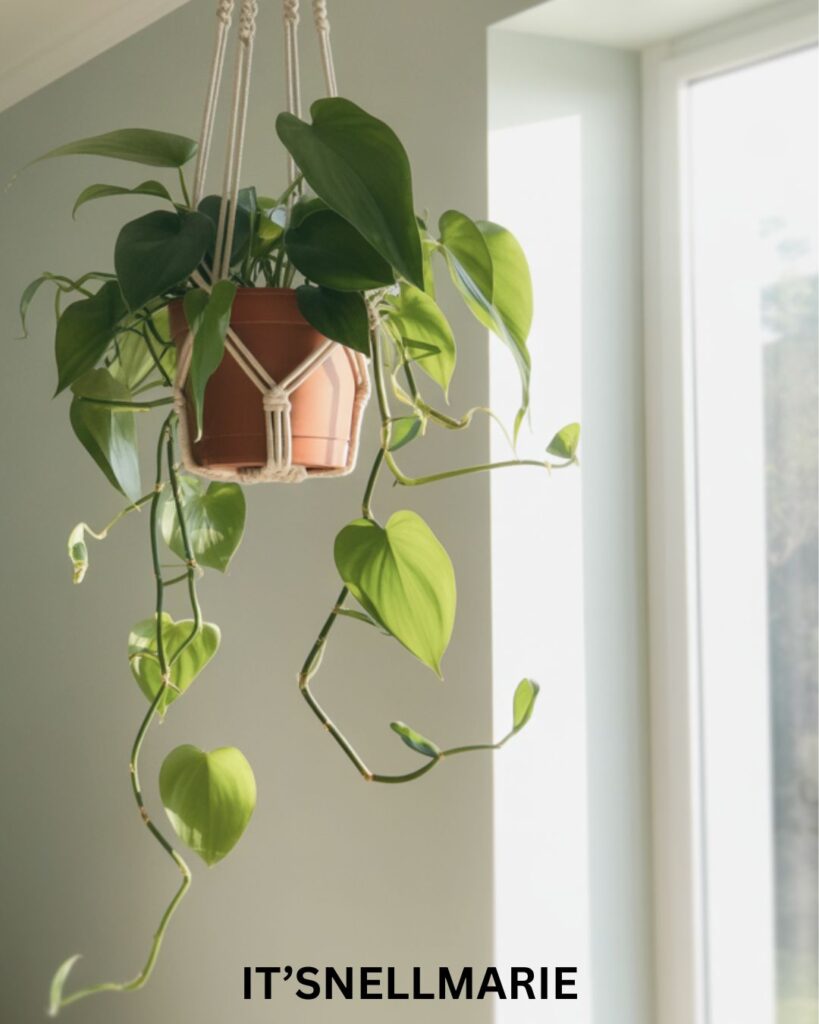
🌿 English Ivy
It loves to climb and trail, so give it something to drape from and you’ll have a plant waterfall in no time. English ivy grows quickly and looks stunning spilling over the edges of a pot or weaving its way down a hanging planter.
You can even guide it along a trellis or wall hook for a more structured look. It prefers bright, indirect light and regular watering, but it’s fairly adaptable once it settles in. Just keep an eye on it—this plant can grow fast and might need occasional trimming to keep it looking tidy and full.
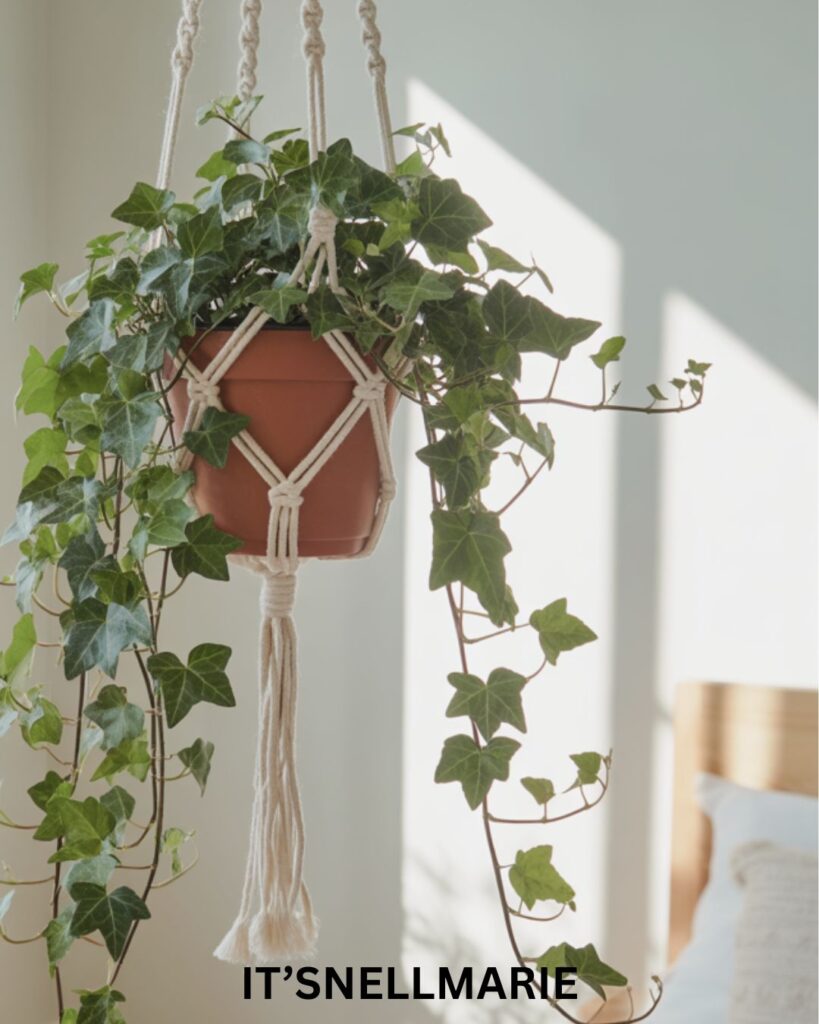
Hanging Plant Setups That Work in Any Home
You don’t need to drill into your ceiling (unless you want to). There are plenty of ways to hang plants depending on your space and setup.
A few options to consider:
- Ceiling hooks (classic and sturdy—just be sure you anchor them well)
- Wall-mounted brackets (nice if you want a decorative touch too)
- Hanging shelves (great for displaying multiple small plants)
- Macrame hangers (super boho and easy to switch out)
- Tension rods across a window (no damage and lots of light)
- Overhead curtain rods (ideal if you want a green curtain effect)
And if hanging isn’t an option, there’s always:
- High shelves with trailing plants
- Plant stands with hanging arms
- Ladders or leaning wall shelves
Light Matters—But There Are Options
Just like any plant, hanging ones still need the right lighting. Luckily, a lot of trailing plants are okay with medium to low light. Still, putting them near a bright window (indirect light is usually best) helps them thrive.
Tips for lighting:
- East or west-facing windows work well.
- Keep an eye on leaf color—pale or slow-growing plants may need more sun.
- If your space is low-light, look into grow lights or choose plants like pothos or philodendrons that tolerate shade.
Rotate your plants every now and then so all sides get light and they grow evenly instead of leaning in one direction.
Watering Without the Mess
Okay, real talk—watering hanging plants can be tricky if they’re way up high. You don’t want water dripping all over your floor or furniture.
Here’s what helps:
- Take the plant down to water over the sink or bathtub.
- Use a long-spout watering can or squeeze bottle if you can’t move them easily.
- Add a saucer inside the basket to catch extra water (but make sure it’s not sitting in water constantly).
- Pot with drainage holes is still a must. Water needs to drain, even if you’re being extra careful.
Pro tip: Use lightweight pots for ceiling-hung plants to make lifting them easier and safer.
Plant Care: Keeping Things Happy and Healthy
Hanging plants aren’t necessarily harder to care for, but you do need to stay a little more on top of things since they’re up and out of your regular line of sight.
A few care reminders:
- Check soil moisture once a week.
- Trim dead leaves or vines to encourage new growth.
- Dust the leaves now and then—they gather dust just like anything else.
- Fertilize monthly with a diluted houseplant fertilizer during spring and summer.
If your plant starts looking leggy or sparse, give it a good trim. Most hanging plants respond well to a haircut and will fill out again nicely.
Dealing with Droop, Pests, and Other Plant Drama
Even the happiest plants can hit a rough patch. Luckily, most issues are fixable.
Here’s what to look for:
- Droopy leaves: Could be too dry—or too wet. Check the soil.
- Brown tips: Usually a sign of dry air or underwatering.
- Yellow leaves: Overwatering is the likely culprit.
- Sticky residue or tiny bugs: Spider mites or aphids. Try spraying with a neem oil solution.
Make it a habit to check on your plants once a week. A quick glance and feel of the soil can catch most problems before they become big ones.
Decorating With Hanging Plants
Here’s where the fun really begins. Hanging plants don’t just bring in greenery—they add texture, movement, and personality to your home.
Try placing them in:
- Corners that feel too empty
- Bathrooms with bright light and humidity (ferns love this!)
- Above kitchen sinks
- In front of big windows
- Over beds or reading nooks
- Mixing them in with framed art on the wall
You can even mix and match plant heights and pot styles for a more eclectic look. Macrame holders, baskets, ceramic pots, or even upcycled containers—go with whatever makes you smile.

Final Thoughts
Hanging plants are hands-down one of the easiest ways to green up your space and add some life to your home. They don’t need a lot of room, they don’t make a mess (as long as you’re careful with watering), and they instantly give your space a little more style.
If you’re just getting started, pick one or two easy-care plants like pothos or spider plants, find a sunny corner, and hang them up. Once you see how simple and rewarding it is, you might end up with a whole hanging garden.
Plants bring peace, calm, and a little wild beauty indoors—and when they’re hanging, they do it all without taking up any precious surface space. Total win.
Save this article on Pinterest
